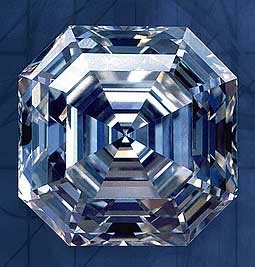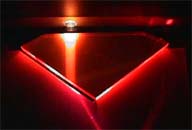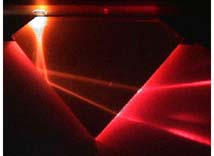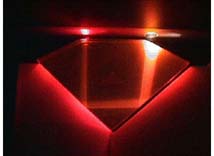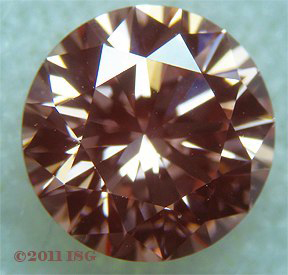A free gemology reference site
Gemology, gemstones, minerals and more
The Gemstones
Diamond
Consumer Information
What color is it?: Diamonds will occur in many colors including white, yellow, brown, black, blue, red, and many colors in between.
What is the story behind this gemstone?: The hardest substance known to man, the most popular gemstone of all time, and everybody knows....that diamond's are a girls best friend.....
Asscher Cut Diamond Shown Above
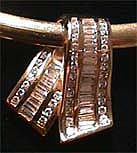 Can I wear it everyday?: Absolutely. Diamonds are the best gemstone for wear and tear...but..... They will break if you hit them just right. There is a myth out there that diamonds cannot be broken. Its hard to do but they can broken. But only another diamond will scratch a diamond.
Can I wear it everyday?: Absolutely. Diamonds are the best gemstone for wear and tear...but..... They will break if you hit them just right. There is a myth out there that diamonds cannot be broken. Its hard to do but they can broken. But only another diamond will scratch a diamond.
Is it expensive?: Yes...and no. You get what you pay for. Most of the diamonds that these big discount stores are selling would have been used in saw blades a few years ago. Now they are in jewelry. Low price means low quality. If you want a nice diamond be prepared to pay a nice price.
Is it a birthstone?: Yes, April.
Consumer Awareness.....
Photo #1 Too Thin .......................Photo#2 Too Deep....................Photo #3 Ideal Cut
The most important aspect of diamond grading...and diamond shopping.... is proportioning. A diamond is cut in the shape you see for one reason...so that all light entering the stone, from any direction, will be transmitted out the top of the stone. This is what makes a diamond brilliant. Any deviation from a proper cut will make the diamond appear less brilliant. As shown above, a diamond cut too thin will allow light to leak out the bottom of the stone. A diamond too deep with also allow light to leak out the bottom of the stone. But a diamond with proper proportions will send all light entering the diamond out of the top of the stone. This is considered an ideal cut and what you should be looking for. This is also why some jewelers can make discount claims of up to 50% off prices of the same quality diamonds from other jewelers. Because they are offering you poorly cut diamonds. We strongly recommend that consumers look for an American Gem Society Diamond Grading Certificate when shopping for diamonds. Otherwise that SI1/G diamond you are offered may sound like a bargain, but if the proportioning is poor you will end up with nothing more than a big clear rock.
What else do I need to know before going shopping?: First, don't be dazzled by claims of 60% off and more by the discount jewelers. They either raise their price tags way up, in order to make it look like you are getting a discount. Or else they have someone write an inflated appraisal that makes it look like you got a big discount. Either way, you lose. And second, if you are making a large investment on a diamond make sure that you are getting a diamond grading report from a reputable gemological laboratory. These will not protect you legally but can be a source of confidence in shopping.
General Information
Gemesis Created Diamond...one of the first commercially produced created diamonds
Source: Diamond deposits are found world wide, probably more than DeBeers wants us to know.
Chemical: C.....pure crystallized carbon. Next thing closest to it....pencil lead or graphite. And no, diamonds are not chunks of coal that did not form. Coal is a fossilized tree and was never even close to becoming a diamond.
Formation: In lower sections of the earths mantle, then they are brought to the surface in kimberlite rock.
Crystal System: Cubic as shown by the octahedron above and below, and the tiny cube diamonds also below.
Unusual Properties: They are very hard, some conduct electricity, and...they have a unique ability to get you out of the dog house from coming home too late from bowling night. And, at 4,289 degree C a diamond will completely burn up leaving nothing behind. (fun fact to know and tell!)
Gemological Information
RI: 2.417
Birefringence: None
Optic Character: Single Refractive
Specific Gravity: 3.52
Hardness: 10....well sort of. If the Moh's Hardness Scale were proportional rather than relative, ruby would indeed be a 9, but diamond would be a 40. Its that much harder than ruby. But since there is nothing between diamond and ruby, diamond simply got the number 10.
Transparency: TP
Special Identifying Properties and Tests: Thermal conductivity most used.
Synthetics: Yes, many and varied.
Imitations: Many and varied including cubic zirconia, synthetic moissianite, synthetic rutile, strontium titanate, colorless topaz, colorless sapphire, and many others.


